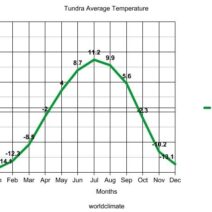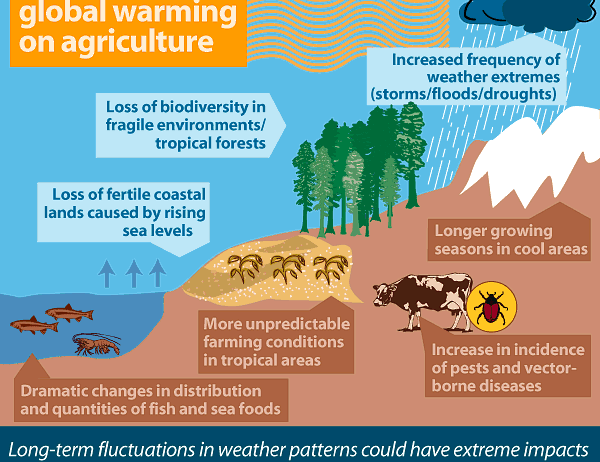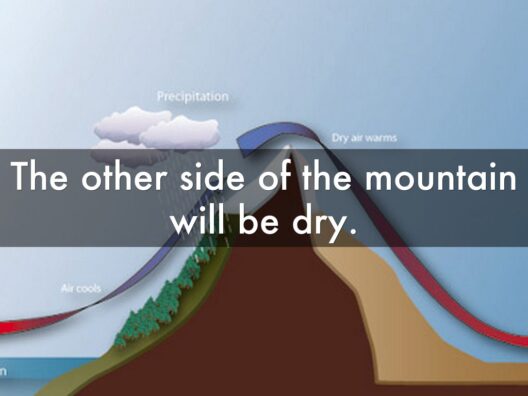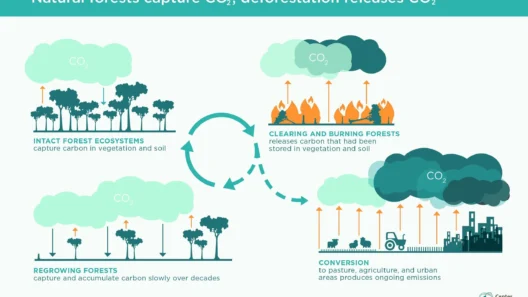Climate change is an omnipresent force that wields profound effects on agriculture across the globe. As the planet warms, changes in temperature, precipitation patterns, and frequency of extreme weather events are emerging as formidable challenges for cultivators and agronomists alike. Understanding these phenomena is imperative for safeguarding food security and promoting sustainable agricultural practices. This article delves into the multifaceted ways in which climate change is affecting agriculture, with a particular focus on the crop sector, which stands on the brink of a major transformation.
First and foremost, rising temperatures are altering the growing season of various crops. Heat stress, characterized by elevated temperatures during critical growth stages, can lead to decreased yields and compromised quality. For instance, staple crops like wheat and maize thrive within specific temperature ranges. As these crops encounter temperatures beyond their optimal threshold, physiological processes, such as photosynthesis and pollination, may be adversely affected. The phenomenon known as “heat shock” can trigger earlier maturity in crops, resulting in a shorter growing period and diminished yields.
Moreover, changing precipitation patterns present another wrinkle in the agricultural fabric. Some regions are experiencing increasingly erratic rainfall—unpredictable deluges followed by extended droughts. The hydrological cycle is being disrupted, leading to conditions that can either drown crops or desiccate them. Regions traditionally known for their fertile soils are beginning to feel the pinch. For example, the American Midwest, often referred to as “the breadbasket,” has seen fluctuations in precipitation that have directly impacted corn and soybean yields. The agricultural community must adapt to these changes by adopting resilient farming practices.
The implications of climate change extend beyond just direct effects on crops; they intertwine with pest and disease dynamics. Warmer climates provide an inviting environment for pests to thrive, leading to increased infestations. In regions where certain pests were once kept at bay by cooler temperatures, the rise in warmth has allowed them to proliferate, potentially leading to devastating agricultural losses. Furthermore, numerous pathogens flourish under these increasingly warmer conditions, posing existential threats to crops globally. The shift in pest behavior necessitates a reevaluation of pest management strategies to mitigate their impacts.
Soil health is an often-overlooked aspect of agricultural resilience amid climate change. Erosion, a consequence of extreme weather events and heavy rainfall, can lead to the degradation of topsoil, reducing the land’s agricultural viability. In addition, intense rainfall can wash away vital nutrients, leaving soil impoverished and less fertile. As cation exchange capacity diminishes, the soil’s ability to retain water and nutrients becomes compromised. Farmers are thus faced with the imperative of restoring soil integrity through practices such as cover cropping, reduced tillage, and organic amendments.
The concept of food security is intricately tied to climate change’s agricultural ramifications. As yields become increasingly unstable due to the aforementioned factors, the specter of hunger looms larger. Vulnerable populations, particularly in developing nations, are at heightened risk. The interconnectedness of global food systems means that failures in one region can precipitate crises in another. Hence, fostering resilience in food production systems is not merely a local issue but a global mandate.
Adaptation strategies are essential for combating these imminent challenges. Innovative agricultural technologies, such as precision farming, are gaining traction as methods to optimize resource use and minimize environmental impact. The integration of advanced data analytics, GPS technology, and remote sensing can enhance decision-making processes. These tools enable farmers to monitor soil health, assess moisture levels, and more efficiently apply fertilizers and pesticides. Moreover, genetically modified organisms (GMOs) have sparked debates on their potential advantages. Crops engineered for drought resistance or pest tolerance could play significant roles in stabilizing food production amidst climatic variability.
The adoption of agroecological practices serves as another potent mechanism for fostering agricultural resilience. Agroecology promotes the utilization of biodiversity, nutrient cycling, and ecological processes to enhance productivity. Diverse crop rotations and intercropping systems can increase resilience against pests and improve soil health. By embracing these holistic methods, farmers can reduce their reliance on chemical inputs and adapt to the unpredictable vagaries of climate change.
As agricultural systems continue to grapple with the repercussions of climate change, collaboration emerges as a vital cornerstone. Stakeholders, including governments, NGOs, and agribusinesses, must forge partnerships to implement sustainable policies and practices. International cooperation is critical, as knowledge sharing and capacity building can empower communities to adapt to climate challenges. Additionally, investments in research and development are paramount for innovative solutions that can cushion the agricultural sector against the impacts of climate change.
On the horizon, a promise lies in the shift towards sustainable agriculture that recognizes the intricate link between environmental health and food production. Sustainable practices not only address the immediate concerns posed by climate change but also hold the potential to restore ecosystems and improve biodiversity. As the global community grapples with these pressing issues, the call to action is clear: to reimagine agriculture as a resilient, adaptive, and sustainable component of the world’s climate response.
In conclusion, climate change is reshaping the landscape of agriculture, casting an urgent light on the need for enhanced resilience in crop systems. The convergence of rising temperatures, shifting precipitation patterns, pest dynamics, and soil health challenges paints a daunting picture. However, the emergence of innovative adaptation strategies and sustainable agricultural practices offers a glimmer of hope. As the world confronts these monumental changes, it must foster collaborative efforts, harness technological advancements, and prioritize sustainable development to ensure that agriculture not only survives but thrives in an era defined by climate uncertainty.







